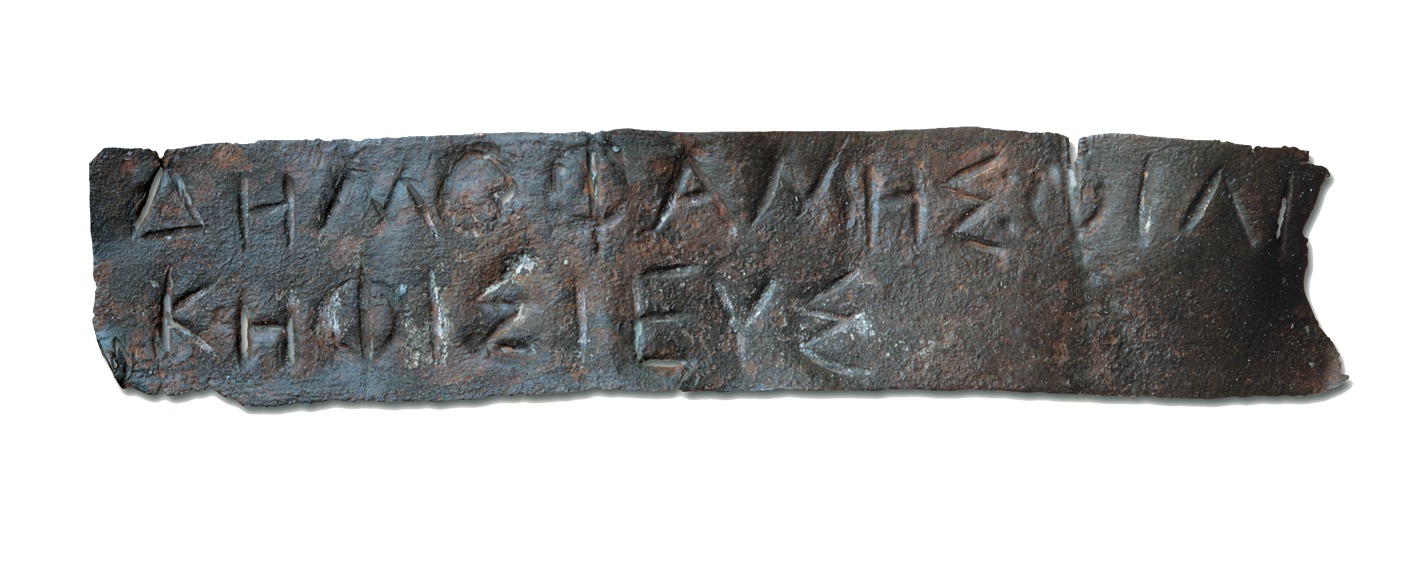
Want to create or adapt books like this? Learn more about how Pressbooks supports open publishing practices.

I. Inflection
You have learned the Greek alphabet and other components of the Greek writing system. Let us turn now to Greek words: what they mean, how to form them, and how to understand them. We begin with perhaps the most essential word in a Greek sentence: the VERB. A verb describes an action. These actions most often are physical (to kick), mental (to think), or express states or conditions (to be).
An English verb form, on its own, often expresses only the action that is taking place, e.g. run, stop, exist. Greek, however, is a highly INFLECTED language. In other words, Greek INFLECTS, or changes, its verbs, nouns, pronouns, and adjectives to represent exactly how each of these words functions grammatically in a sentence. For a Greek verb, these inflections usually communicate FIVE pieces of information: PERSON, NUMBER, TENSE, MOOD, and VOICE.
1. PERSON indicates the subject of the verb.
2. NUMBER indicates whether the subject (“person”) is singular or plural.
The Greek SINGULAR and PLURAL operate much as they do in English. Greek, however, also has a DUAL number, which indicates that there are precisely two subjects. This number is rarely used by most authors, however. Here we concentrate on the much more common singular and plural. The dual number will be discussed as it is encountered in your readings.
3. TENSE indicates when the action happens.
English uses a combination of verb changes and/or additional words to indicate six main tenses:
As we will see, Greek tenses are similar, with a few important differences.
4. MOOD refers to the “mode” of the verb.
Most often, the mood of the verb indicates whether the action is real or hypothetical in some way. English uses a combination of verb changes and/or additional words to indicate four moods.
Greek moods are similar, though again with some important differences.
5. VOICE indicates the relationship between the action of the verb and its subject.
English uses a combination of verb changes and/or additional words to indicate two possible voices.
The Greek ACTIVE and PASSIVE voices operate much as they do in English. Greek also has a MIDDLE voice, which often indicates that the subject is both the agent and recipient of the action. We discuss the middle voice in more detail in later chapters.
II. Parsing
To PARSE a Greek verb means to identify these five qualities – Person, Number, Tense, Mood, Voice – for any given verb form. For example, a specific verb form could be:
Once you know these five items and the verb’s meaning, you have identified the verb completely and understand what it means.
I. The Present Indicative Active
Now that you have learned the types of information that a Greek verb form conveys about an action, let us turn to how a Greek verb is inflected to convey this information.
English verbs often make additions or use additional words to convey Person, Number, Tense, Mood, and Voice. Consider the verbs in the following sentences:
You are running.